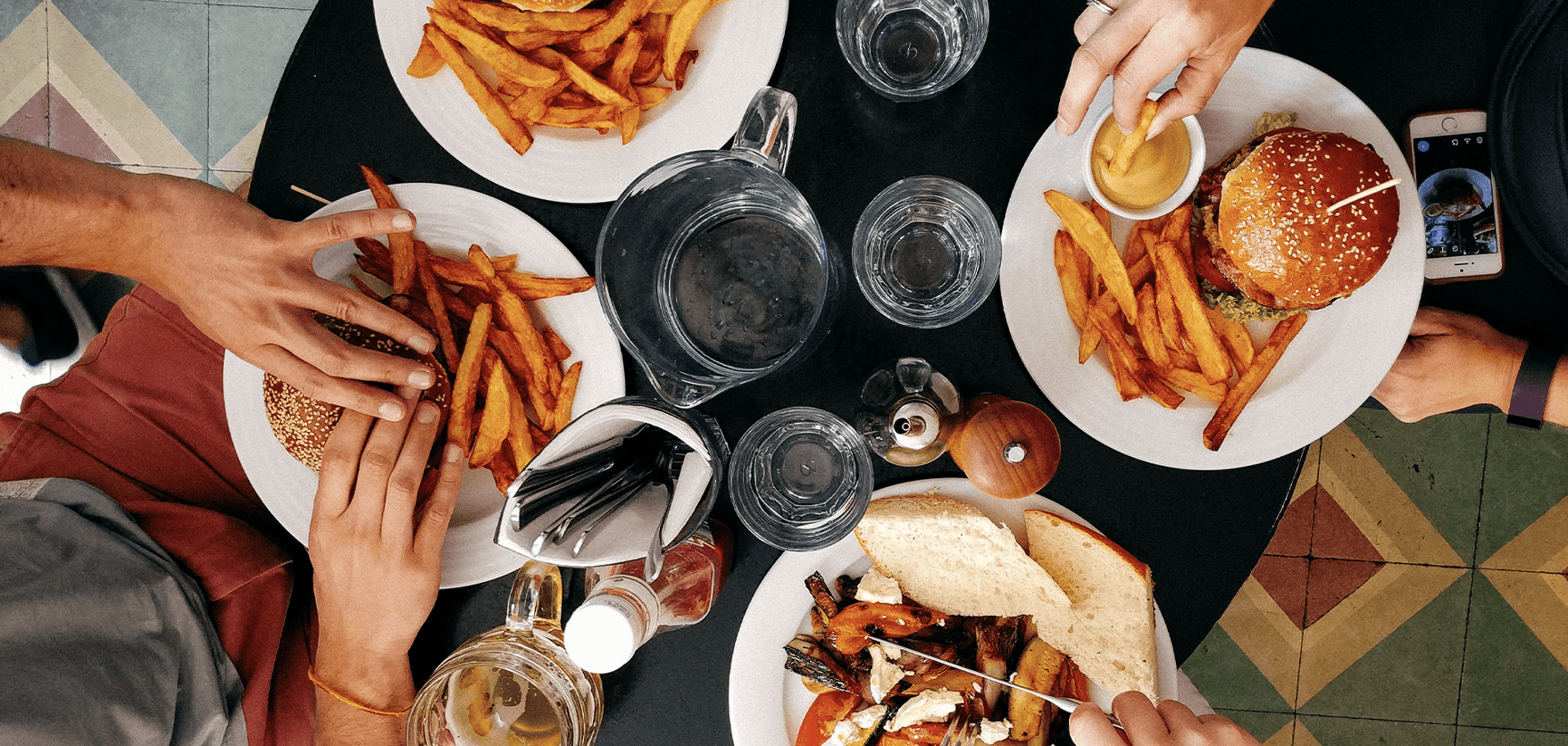
What trends are we seeing in the quick service restaurant (QSR) sector in 2023? Where do the challenges lie? Which elements are proving resilient to the challenges, and which can digital make an impact on?
In this post, Polina Medvedeva and Luke Hankinson from our Client Partnerships team talk to Neil Gad, CEO and Founder of LYGO to discover what’s on the menu for QSR.
Significant headwinds but some positives
- Demand falling as inflation bites: Consumer demand has definitely dropped off in the last 3 months as cost inflation generates the twin effect of rising QSR prices and a reduction in household disposable income.
Until summer 2022, demand was proving fairly resilient as the sector recovered following relaxation of COVID restrictions, but is now likely to remain subdued for the next 12-18 months with the UK already in recession, and with energy prices and other living costs expected to rise further. UK Hospitality, the industry body representing the sector, expects a wave of business closures without government support and intervention.
- Cost inflation and supply chain challenges force recipe creativity: With double digit cost of goods inflation, on the back of already-disrupted supply chains (driven by COVID and Brexit), there is only so much that can be passed on in terms of price increases. QSR operators are having to adapt menus and recipes in creative ways.
‘Shrinkflation’ is happening across the board with smaller portion sizes, but also substitution of expensive ingredients, especially the reduction of protein items, or elimination altogether, and an increase in ‘filler’ ingredients like mayo, lettuce, etc. You don’t have to search hard for forums and mainstream press articles bemoaning the recent decline in food quality. It’s not just QSR, supermarkets are facing similar criticisms.
The positive in all of this is that substitution has allowed room for experimentation. Plant-based offerings are the prime example, but there are others, as the ongoing exploration of lab-grown meat alternatives demonstrates.
- More vegan; less meat: The signs were there earlier this year, when Deliveroo reported sales of plant-based menu items were up 117% on the previous year. Veganuary was just the start of a trend that has remained visible throughout the year.
- Home delivery showed some resilience but also now being impacted: some commentators describe the use of the UK delivery market as “habitual”, a position driven by pandemic lockdown restrictions, but which remained steady since despite recovery of hospitality venues recovering. However, delivery is also now likely to be a casualty of rising cost inflation and reduction in consumer spending, as it is perhaps more discretionary than eating out in a social setting (and therefore first to go).
- Team recruitment and retention challenges: there are record numbers of vacancies across the hospitality sector, especially amongst chefs (The BBC reported earlier this year that the chef shortage was now at “boiling point”). This has of course, led to rising wages to compete for talent.
Government visa schemes are unlikely to be extended to the hospitality sector, despite lobbying by industry bodies and leading companies (The Caterer). Vacancies may now drop off in the coming 12 months as hiring slows down reflecting flatter or declining demand.
- Productivity puzzle remains an issue: The Guardian reports that more than 50% of hospitality operators are now loss making and any business owner you speak to will say that it is more critical than ever to efficiently manage staff costs, inventory, food waste and energy costs. Digital offers solutions, but the truth is that too few QSR business are taking full advantage of the potential of digital to increase efficiency and reduce costs.
Opportunities in QSR
- Commercial optimisation: All QSR operators will be actively engineering menus and recipes to try to protect margins as much as possible, on an almost weekly or daily basis, as costs increase rapidly. This rate of change makes it difficult to keep pace with and optimise the commercial performance of the menu i.e. maintaining a coherent pricing architecture across a range; understanding which menu items are performing best or worst and then optimising their sales; identifying where to apply price increases and where not to.
Getting this right requires significant clarity of data and a clear way of analysing it to generate the right insights, and quickly, so it is actionable. For example, to identify high sales but low gross margin products and adjust recipes, or to test the impact of increasing prices on sales volume of top performers, to see how much demand can be maintained even when the price increases.
- Predicting demand to optimise costs: Forecasting demand was already difficult, but is especially difficult in light of the current market conditions with demand drivers changing constantly.
Accurate forecasts are key to planning staffing for the coming weeks to avoid over or under staffing, and to efficiently manage inventory and food waste. In an already loss-making environment, it is more important than ever to get these right. Simply analysing historical sales patterns is not useful, so technology that can unpick the many variables that are driving consumer demand is essential to help QSR operators navigate the likely sales trends, to give them a fighting chance of generating some level of profitability.
The ecosystem of software vendors in the hospitality space is well aware of this challenge, and new players are emerging (like LYGO, which I run) that will hopefully prove to provide next-generation forecasting capabilities, leveraging AI and ever increasing volumes of big data available on consumer behaviour and hospitality demand patterns.
- Make UX/UI more efficient: We know that, while price will always be a core driver of consumer spend, availability and the ease of purchase became equally vital elements during the pandemic. A UX/UI focus enables brands to address these needs, with sites and apps that anticipate meal choices, present vegan options at the tap of a button, and ensure that the people who care about nutritional information see it upfront.
As a starting point for re-engineering UX, creating granular user personas ensures you can create menus and experiences for the full breadth of your customer base.
- Automate more of the ordering process to upsell: Recently, AND Digital developed an award-winning web app for diners at Zizzi and Ask Italian restaurants that mirrored the traditional dining experience. Not only could diners order via the app, they could customise meal options, add items to their order throughout their visit, split bills and add tips. Diners loved the app. Tips increased by 50%. But perhaps the crucial point for businesses is that average visit time dropped by 10 minutes for those using the app. More automation means greater throughput of customers, and that could be a vital tool in protecting profitability.
To explore how AND Digital could help protect the profitability of your food business, talk to us.
To talk to LYGO about how its accurate, AI-driven demand forecasts could help your hospitality business, click here.
More Digital Transformation in the QSR Sector can be found here



